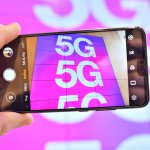Good news for business — US telcos aggressively building 5G towers

5G is forecast to open new doors for businesses looking to get closer to their customers and create transformative, media-rich, engaging experiences.
From the Internet of Things (IoT) to augmented and virtual reality (AR and VR), and even autonomous vehicles, 5G holds the key to their accelerated deployment.
It’s why there is so much interest in commercial and public 5G roll-outs — and why Verizon’s plan to quickly double the number of cities it offers the service to in 2020 has created excitement in US markets.
From 31 cities at the end of last year, the telco is now keen on setting up 5G towers and base stations in 60 cities. Compared to 4G, 5G requires a denser network which is why the decision to invest time, energy, and resources in developing and deploying the technology has been praised.
Verizon believes that the move will help it retain its spot as a leader in the market.
“We have the opportunity to continue our journey to be the leader on 5G. We’re not only expanding markets, we’re also expanding coverage in all the markets,” Verizon CEO, Hans Vestberg, said recently.
Although neither Vestberg or his team mentioned the new cities that they will be extending coverage to, changes are expected to be reflected, almost in real-time, on Verizon’s digital 5G coverage map (which only says that the company hopes to bring 5G to San Diego next).
Rivals T Mobile, AT&T, and Sprint host similar maps, in a bid to highlight the growth of their infrastructure to private users and business customers.
The time-consuming deployment of 5G towers is expected to help telcos grow their revenues, especially when they support business applications and use cases in industries such as healthcare, retail, and logistics.
5G is tipped to make robot-powered remote-controlled surgeries a reality, bring virtual reality-powered shopping experiences to brick and mortar stores, and expand the horizons for drones and self-driving vans deployed for last-mile deliveries.
Experts and analysts studying 5G believe that the technology will make a tangible impact on our world, and its commercial implications are expected to be significant for businesses that pioneer use cases so far only discussed in theory.
Telcos understand this and see it as a significant opportunity to recover costs sunk into upgrading their networks yet again, after 2G, 3G, and 4G.
YOU MIGHT LIKE

Will UK Huawei 5G decision leave the US behind?
Sure, a growth in revenues from consumers will follow, but the bandwidth demand from organizations such as retailers and healthcare institutions, and the inherent ability to ‘splice’ 5G networks is what will create new income streams and significant financial rewards for telcos.
5G-powered cellular devices are also quickly making a debut creating excitement across the US.
As a result, in the coming months, more telcos are expected to announce network expansions in a bid to keep up with rivals and meet demand from users. How they fare with delivery, however, only time will tell.









